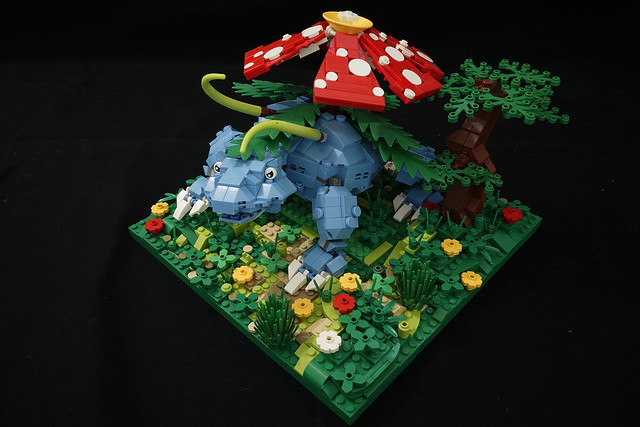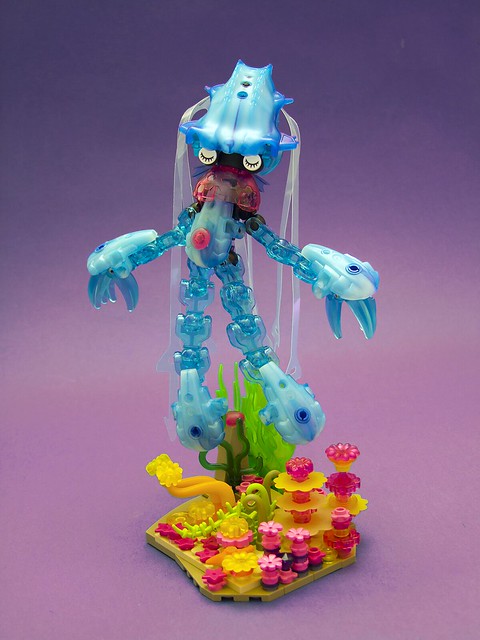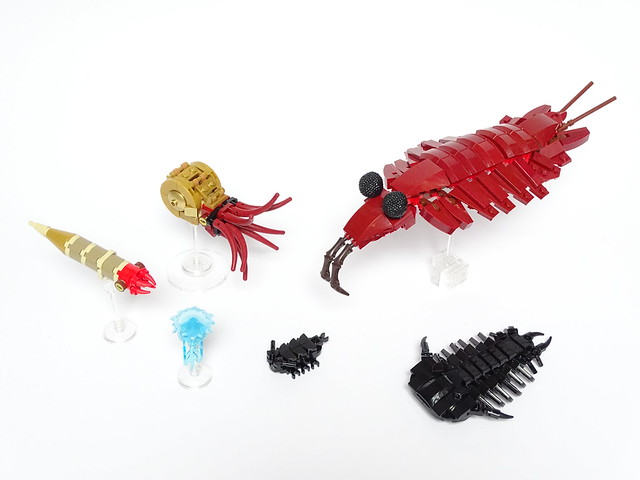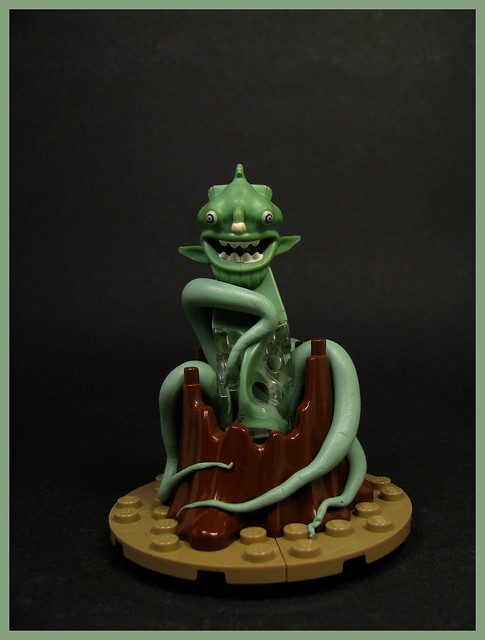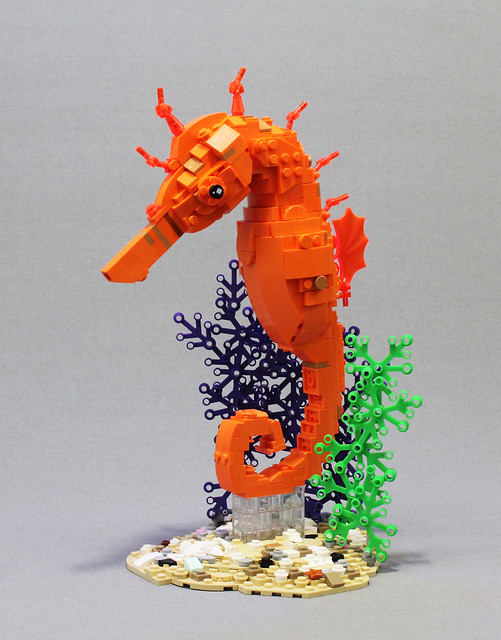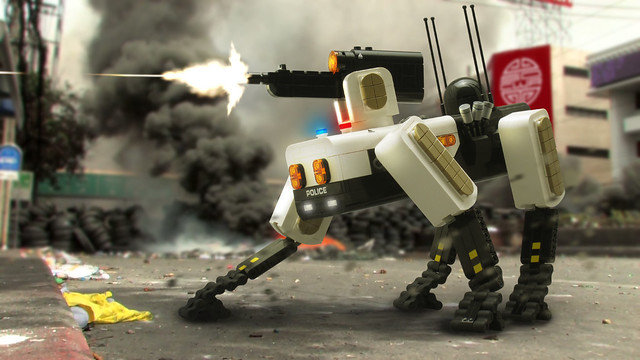This latest LEGO creation by master builder Aaron Newman is the stuff of nightmares for those who enjoy perfectly manicured lawns and neatly tended gardens. If that is you, stock up on a few 50-gallon drums of your preferred herbicide, or else dial your lawn service’s emergency line immediately! Inspired by the manticore of classical mythology, Aaron’s “planticore” is part flower, part root, part weed, and fully territorial. Stay away from the dandelion head that’s reminiscent of the lion that formed part of the manticore, as well as the many blooms at the tail that effectively evoke the scorpion stinger. The aggressively-posed beast is joined by a swarm of brick-built bees and fierce female faeries to ruin your country club’s casual croquet tournament.
Aaron is well-known in the LEGO community for both his creature builds and his dynamic minifigure poses, and he does not disappoint in either category here. I am personally quite partial to the various Elves hairpieces on his faeries, and the way he uses legs taken off of the hips for more natural stances takes them to the next level. Don’t miss the pink afro minidoll hair as a clever clover blossom, either. The croquet wicket, with the DUPLO ball on its way through, sets the small scale of the build beautifully, and the editing effects with the grass and sky lend it a wonderful outdoor atmosphere. I suspect that I have several stray planticores roaming about in my own yard, judging by the weeds and chaos I see out there; or maybe I am just too busy trying to build LEGO like Aaron to prune and mow…


